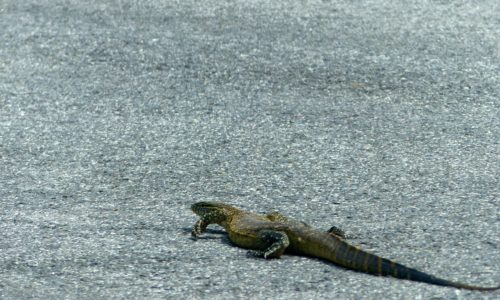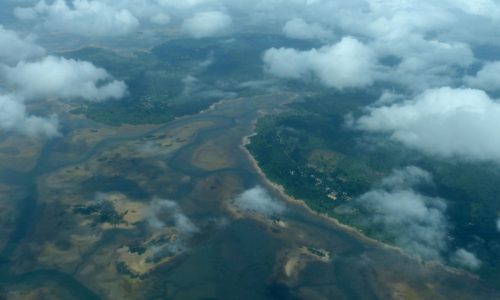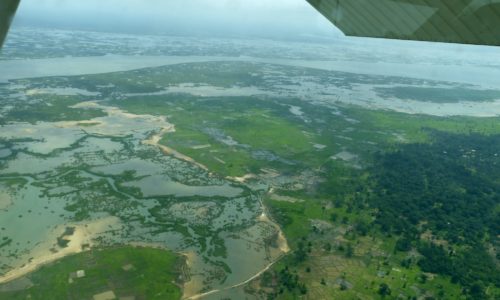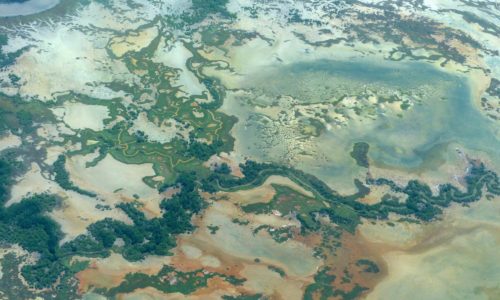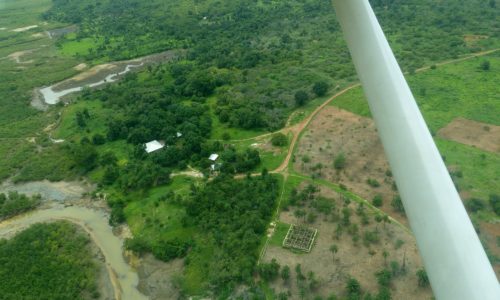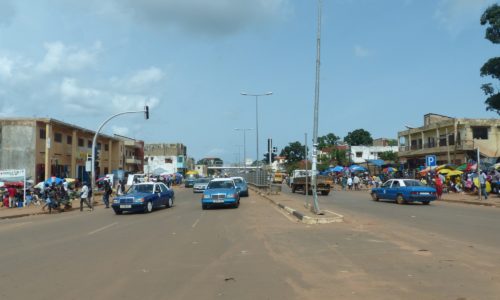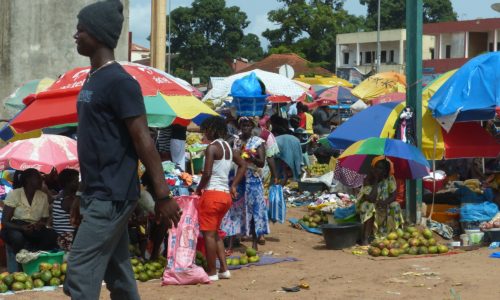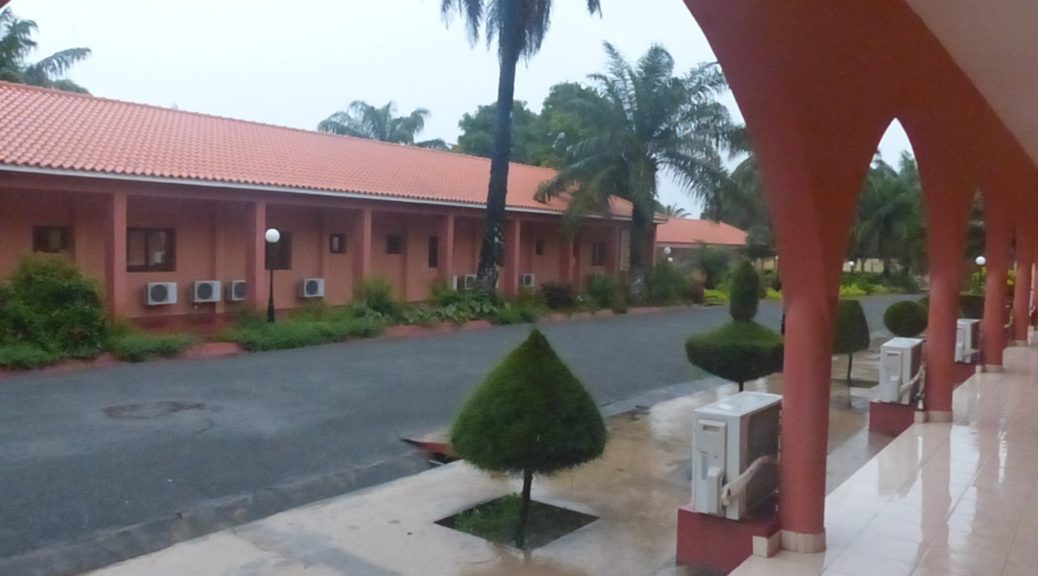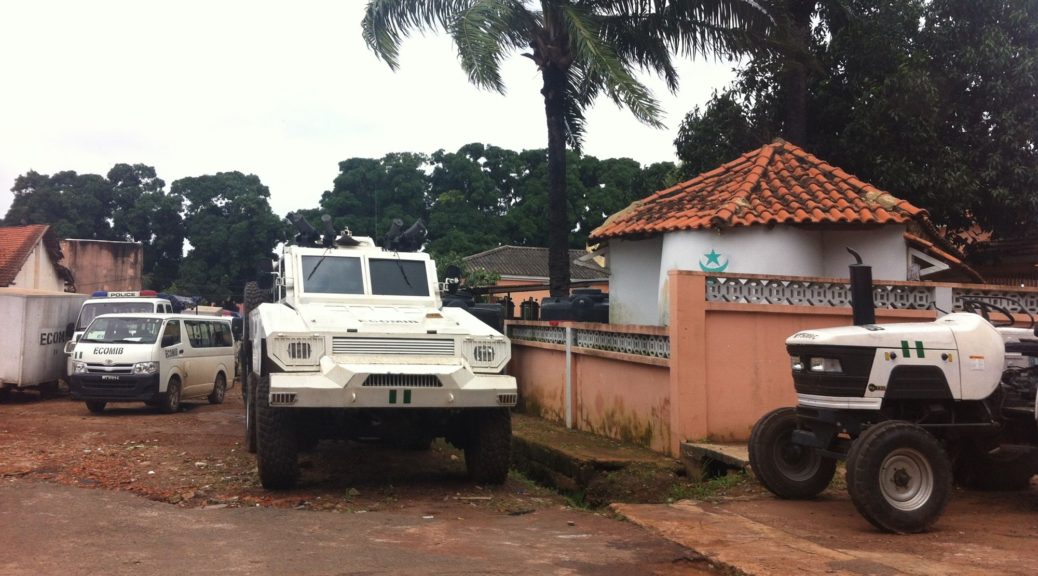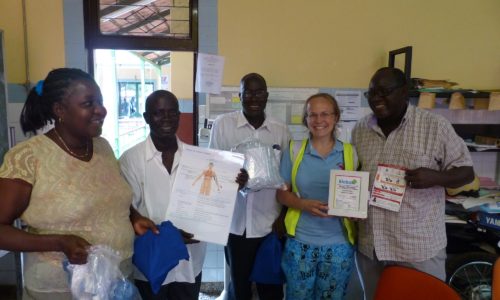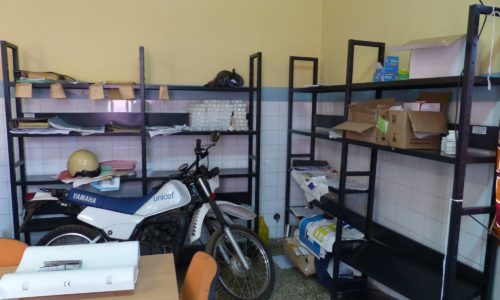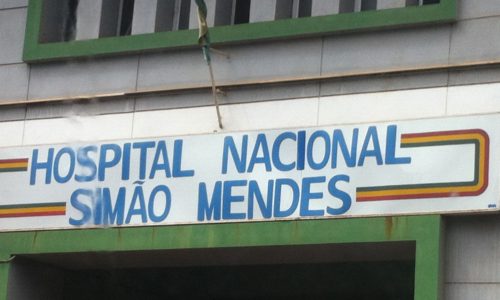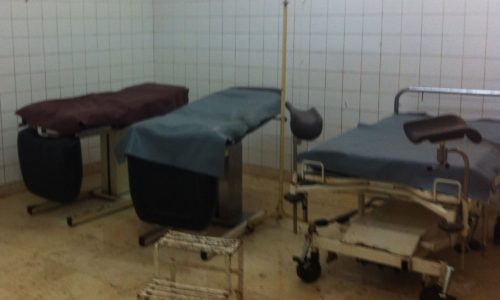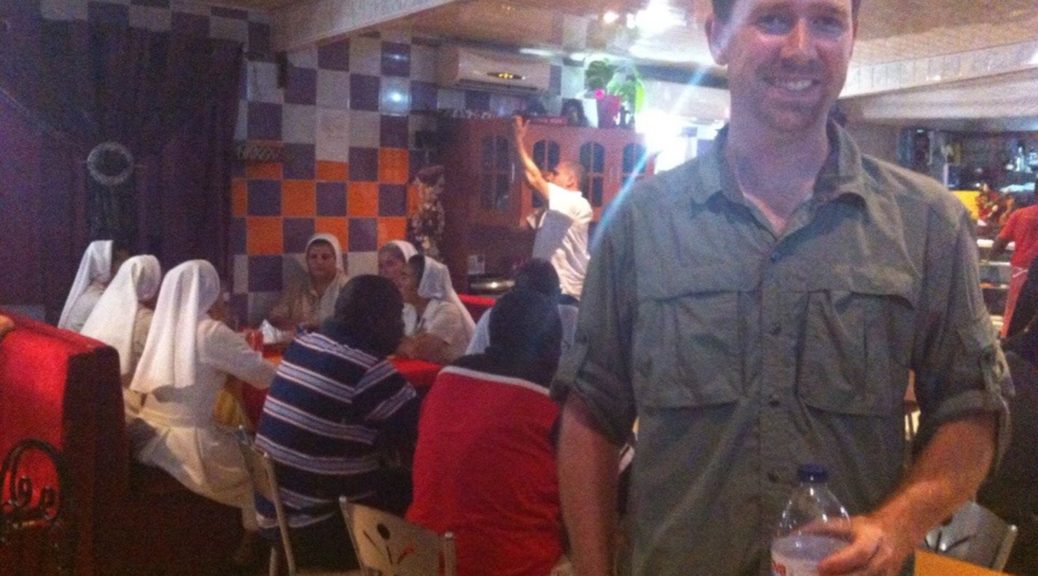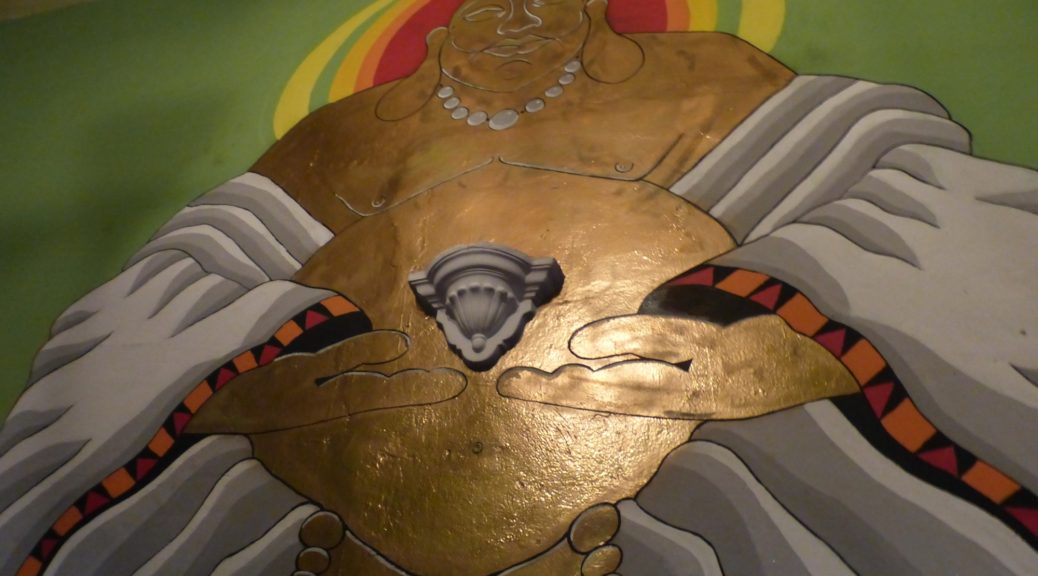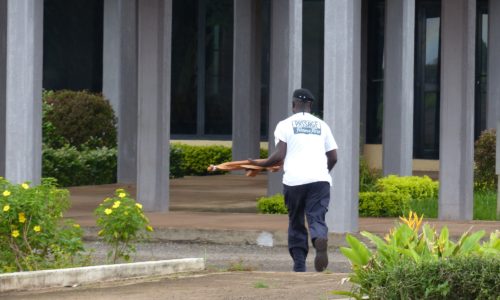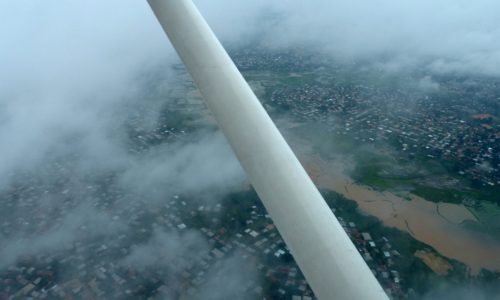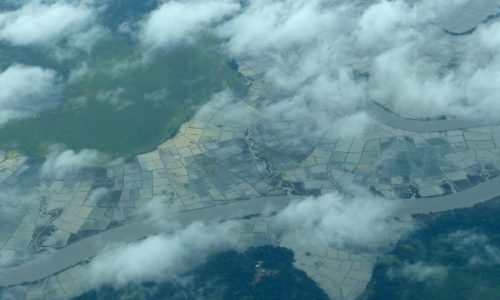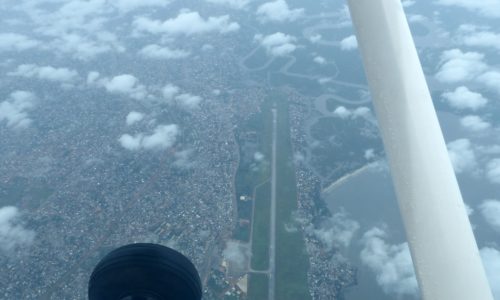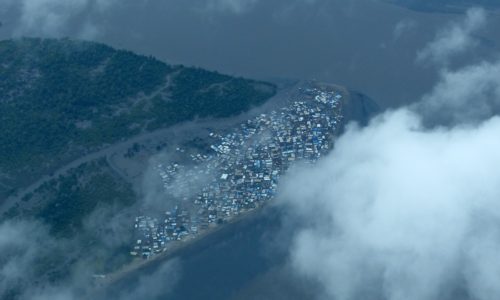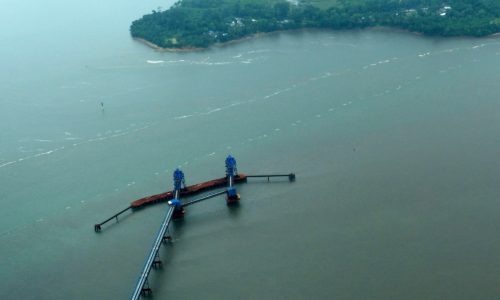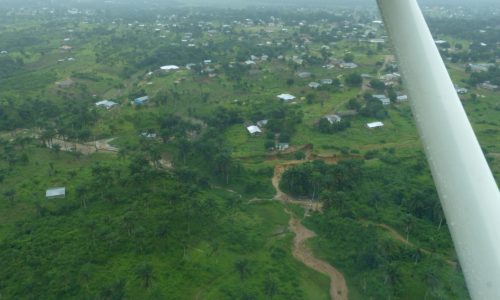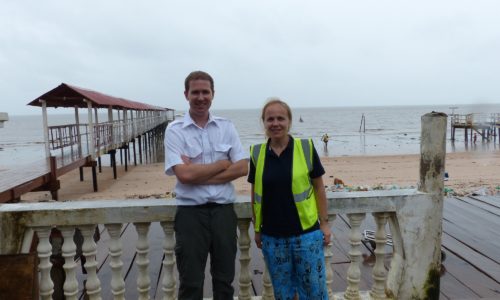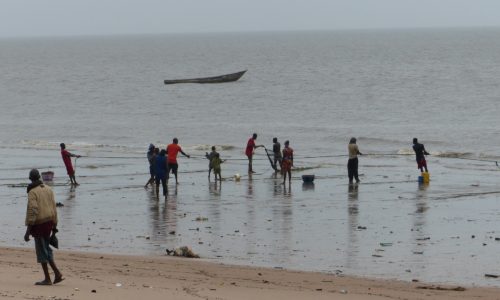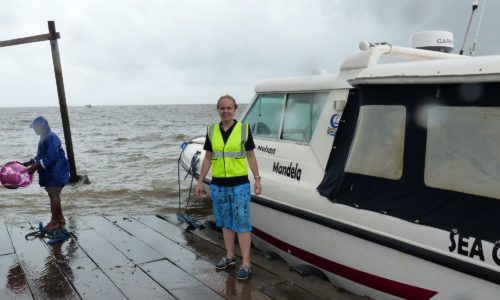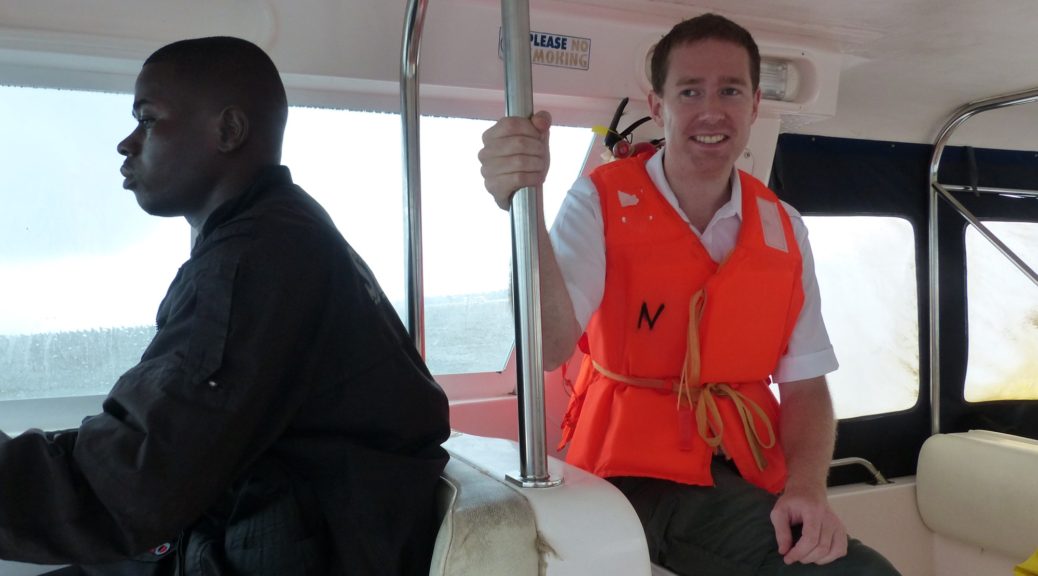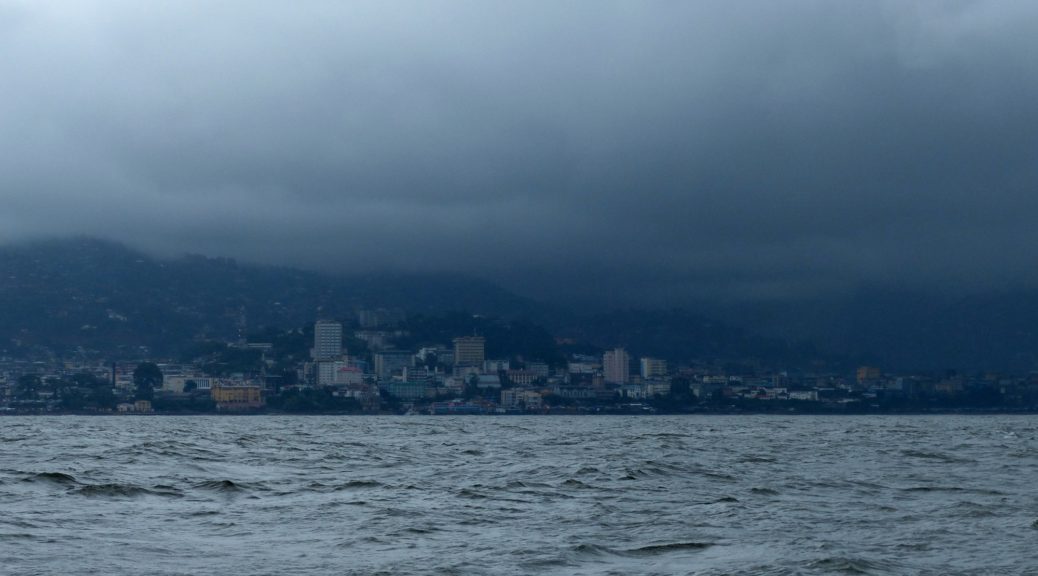Africa – Guinea Bissau and Sierra Leone
Our friends from the airport showed up just 30 minutes late, not bad going. While waiting I was treated to the spectacle of a retired English gentlemen being berated by his young Gambian “companion”; apparently he was leaving, and she did not consider that she had been adequately compensated for her companionship. Sophia, meanwhile, was being accused of food theft by the lady guarding the breakfast buffet for having the temerity to try and carry her coffee and slice of toast into the lobby to wait with me. Entertainment over, the car arrived and we sped back to the airport, secure in the knowledge that we’d be helped through security and so on with far fewer hold-ups than in Dakar!
In the terminal building, we were presented with two plastic chairs in the middle of the departures hall and told to wait while Lamin and Mr Ajatt prepared whatever things needed to be prepared. This was primarily the bill, which ended up being the second highest of the trip so far; the majority of this being a $250 “Navigation fee”. An airport bus took me and Lamin to the tower to file the flight plan (which we managed to do after the security guard managed to track down the guy who does such things), while Sophia and Mr Ajatt went straight to load the aircraft and organise fuel. While in the tower, Lamin rather sheepishly presented me with another 250 euro bill, this time for handling, but before I could even reply told me that if I wanted I could talk to his boss to “make a deal”. This we immediately did, and in no time at all they had caved completely on the idea of a handling charge and withdrew it, much to our delight. Lamin and Mr Ajatt earned themselves a generous tip.
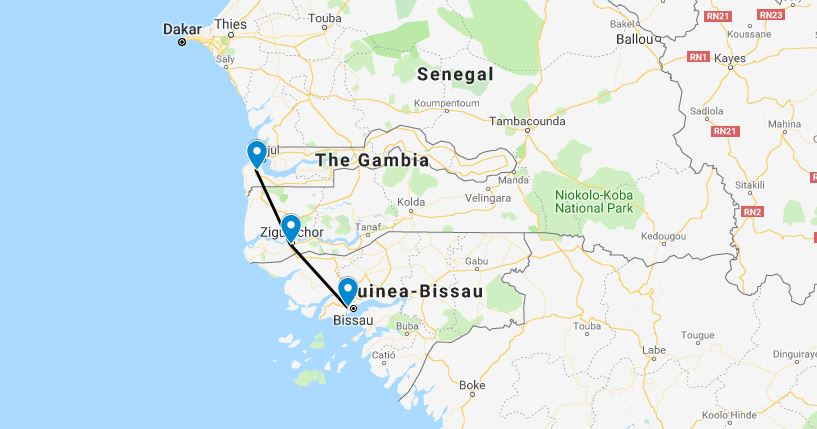
We climbed slowly as usual to keep engine temperatures well within the acceptable range. We were in and out of cloud as we made our way up to 7,000ft, much of the time enjoying a spectacular view of the countryside below. The landscape was lush and green, as was to be expected in the rainy season, and fairly unpopulated. 40 miles or so south of Banjul we were handed over to Bissau, where the real fun began. We were informed that the clearance number we had listed was the same as that for another flight coming in the following day from Nigeria, and that they would therefore not allow us to enter their airspace. We spent some time arguing the point, all the more so because we suspected that they simply could not understand numbers; half the time when reading back our permit number he was saying “528” instead of “258” leading me to believe that the problem was likely to be a lack of numeracy in the tower.
The closest airport was Ziguinchor, in southern Senegal. They very quickly gave us permission to land, after explaining the situation, so that we could sort the matter out on the ground. Much friendlier people than Guinea Bissau! Within a matter of minutes we were on the ground and parked in what actually appeared to be a GA parking spot; most unusual to find things directed at small General Aviation around here. We were greeted at the aircraft, and guided to the tower where the friendly controller promised that he and the airport manager would help us get things sorted out. I also spoke to Mike Gray, of White Rose Aviation who had arranged the clearance; he promised to investigate and get right back to me.
The problem turned out to be as expected. Mike phoned back within 15 minutes, having spoken to the agents in Bissau and confirmed with the CAA Officer who issued the clearance that it was correct and valid. The Officer promised to call Bissau tower and inform them to let us in, and we followed up with a call via the tower at Ziguinchor to confirm that all was in order before we took off. Just as we were relaxing, of course, another problem showed up; despite being told by tower that they were not needed (as we were not leaving the airport), customs showed up and decided they needed to throw their weight around. They insisted on the entire aircraft being unloaded and all the baggage carefully inspected, before we were finally allowed to repack and go on our way. Thankfully, “Baby Anne” who had given us such trouble in The Gambia was no longer on board, after being donated to a hospital in Banjul.
The remainder of the flight to Bissau was smooth, with ATC proving to be very accommodating this time. The airport was small, with a single terminal building and parking for perhaps one airliner; evidently things were not going to be busy, as we were given a parking space right in front of the arrivals hall. This would be the first place that we had arrived in without a visa (and with “visa on arrival” not possible; but, we’d been informed that as pilots, an aircrew visa could be issued easily on arrival. This turned out to be true, and we made it through the airport in record time with Guinea Bissau stamps in our passports; it really could not have been easier. The bus from Hotel Azalai collected us and took us to check in; this hotel was an old army base, converted into visitor’s accommodation, near the centre of town. That evening we decided to take a taxi and go on a tour of the town, so that we could at least say we had seen some of it. This started well, with interesting landmarks such as the Presidential palace, continued through a number of different country’s embassies, and by the time it came to “and here is another petrol station” we decided it was probably time to call it a night.
Today was to have been the day we flew onwards to Conakry, in Guinea. However, as the day dawned, things were not looking good. Mike Gray of White Rose had reported the previous day that permits were still not in hand, but that he was hopeful of getting them on the Sunday morning. We waited hopefully, but news came through that while overflight permits were being granted, landing clearances were not available. This was apparently a general issue, not specific to us, due to a “situation” in Conakry; no other information above and beyond that was forthcoming. We resigned ourselves to another night in Guinea Bissau.
Having been cooped up in the hotel for most of the day, we decided to try and eat in town. We had very little local money, but the hotel front desk assured us that it would be no problem to pay with dollars. The hotel shuttle dropped us at the restaurant, which turned out to be an Italian place; slightly incongruous but it came recommended as pretty much the only restaurant around. It turned out that dollars would not in fact be usable (and credit cards are pretty much unheard of in Bissau); the boss was away, and without being able to ask him, no-one was willing to go out on a limb. So, after a fruitless trip to an ATM machine (which accepted Guinea Bissau cards only) we returned to the hotel, where after some investigation we found a way to change money at a very poor exchange rate. Second time lucky; we returned to Papa Loca and had what turned out to be, surprisingly, a passable Italian meal.
Another day, another attempt to get to Guinea. We decided that whatever happened, we’d need to visit the aircraft; both to get hold of some clean clothes as we’d only taken enough for one night, and also to acquire some medical equipment; if we were to be stuck here, we might as well make the most of it and visit a hospital to make some donations. The airport was, like when we arrived, completely devoid of passengers; but like many of the airports in Africa, still teeming with guards. They didn’t seem terribly interested in us and we were able to wander the wrong way through the arrivals hall and out towards the aircraft. On the way we met a gentleman in a smart suit who told us about the procedures for paying the fees, and also called the fuel truck for us.
Given the short flight coming up, I decided to take enough fuel to get us to Sierra Leone (just in case the Guinea permit never came). This boiled down to a mere 30 litres in each tank. The order was communicated to the fuel guys, who confirmed the amount, and then set about attempting to put 300 litres in each tank. They realised their error as Jet A started to gush liberally from the filler port in the first wing, and shut things off. Fortunately we were parked on a slope, and they had fueled the higher wing first, so I was able to open the fuel valve and let the excess cross-feed into the other tank. We ended up with rather more fuel than anticipated, but it could have been worse.
With no news about Guinea, we wandered back to the main road to try and catch a taxi. The usually busy road was suddenly devoid of cars for hire, and we stood for quite some time hoping the rain wouldn’t start again and being harassed for money by an ever growing group of people. It is a sad fact in many of these places that if you’re white it’s automatically assumed you have a lot of cash to dole out; we had barely enough for the taxi to the hospital to donate the equipment. Moments later a 4×4 screeched to a halt alongside us and we were told to “get in the car” – this we did, deciding that the occupants (a middle aged man with crutches, and a bored looking teenage girl) did not look terribly threatening and were certainly preferable to our current companions.
Our saviours turned out to be just the people we wanted to meet. The driver’s sister turned out to work at the main hospital, in the maternity ward, and he drove us straight there and introduced us to her. She in turn took us to see the chief of OB/GYN and some other doctors, who were extremely pleased at the equipment donations which included this time some equipment for the operating theater. After the donations were completed we were given a tour of the maternity areas of the hospital; while apparently rather more pleasant surroundings than in Rabat, they were still a far cry from what we are used to in the developed world. Tour complete, we were driven the 5 minutes back to the hotel by the chief’s driver.
Yet another day in Bissau. Having given up, with regret, on Conakry we tried to see if we could bring our permit for Freetown in Sierra Leone forward by a day and fly there early. Even this was not to be, however; going through standard channels produced no results, and enquiries from our handling agents in country brought the news that the permit could maybe be altered with payment of a $250 bribe. Disheartened by this abuse of position by a government employee (although not surprised, sadly) we told them we were not interested and would simply wait until the following day.
The evening brought another trip to “Papa Loca”. Despite being almost the only restaurant in town, the taxi driver had no idea where it was, although he only made this clear once we were already in his taxi and driving away. Luckily Sophia remembered that the restaurant was close to the Presidential palace, which he did know, and from there we were able to direct him down a couple of side roads. The meal was once again fairly good, and the evening was brightened by the arrival of 6 European nuns, evidently keen for a pizza.
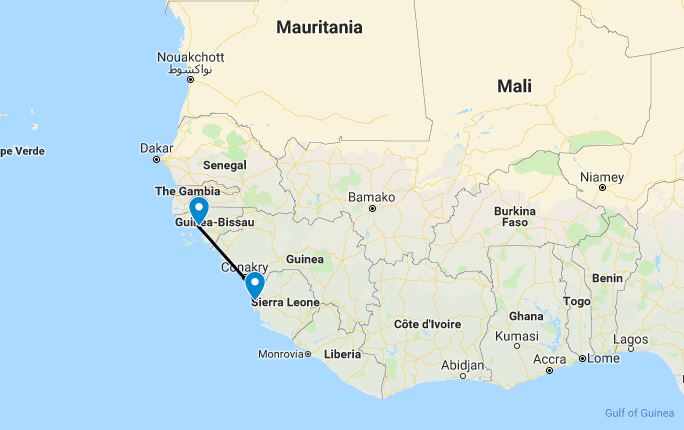
At last, the escape from Bissau. We had received overflight permits for Guinea with no trouble, and the landing permission for Freetown had come in for the original day, having not paid the bribe. The hotel shuttle dropped us at the airport and once again we breezed out of the “Arrivals” door, stopping briefly to have our passports stamped on the way through. We wandered up to the tower, which was at a higher level alongside a large apron with more aircraft parking. A Nigerian private jet had been relegated up here, perhaps because a C182 was occupying the prime space next to the terminal. We paid our fees, a total of less than $50 for everything, and filed our flight plan before returning to the aircraft and stowing the baggage, something we were getting fairly competent at by now.
The flight to Freetown, a little over 250 nautical miles in length, was fairly short compared to a lot of the legs we’d been flying. The weather was reasonable, with a great deal of cumulus cloud around at low levels, and varying layers of overcast that we climbed through. Views of the ground were fairly limited; it was becoming apparent that this type of weather was fairly typical for West Africa at this time of year. We had a great view of Conakry as we passed overhead, and briefly regretted that we’d been unable to visit. The occasional inexplicable bureaucratic cock-up is inevitable when travelling internationally, however!
From Conakry it was less than 70 nautical miles into Freetown. The cloud became thicker as we neared our destination, and we flew the VOR instrument approach to land in light rain. An instrument rating really is invaluable for this kind of trip; we’d have been stuck multiple times already due to weather if we didn’t have it. We were told to park in a bay right in front of the main terminal, and moments later (having unloaded our bags) told that we actually needed to park half a kilometer away down the other end of the apron. Sophia elected to head for arrivals while I moved the aircraft; no point in reloading all the bags. Entry into the country was straightforward with no other passengers around and a helpful, if surly, escort from security.
Freetown airport is not terribly close to the city of Freetown. Due to a complete lack of flat land, the airport has been constructed north of the city, the other side of an enormous river mouth. There used to be multiple ways of crossing; water taxis, a ferry, a hovercraft, and even helicopters. None were what the West would classify as “safe”. The latter two have now shut down, apparently due to lack of maintenance on the vehicles, and one is left with the ferry (a very long way around) or the ~40 minute crossing by water taxi, which is what we plumped for. Franklin, our handling agent, dropped us at the quay and after waiting for the other two passengers to arrive, we set off.
We had been informed that the water taxi had been shut down until noon that day due to stormy weather making the crossing unsafe. It was clear that conditions had improved only marginally; the rain continued (as it would almost non-stop until we left four days later) and there was a large swell running. The water taxi was a fairly modern, well equipped craft from the USA that had clearly been rather neglected by its new owners; lack of maintenance, once again. At $40 per person, each way, one would have thought they might be able to spend a little to keep the equipment running; especially when the boats could carry well over 20 people each.
We set off using only one of the two outboard engines, perhaps to save fuel, or perhaps because only one was working. Whatever the reason, the one remaining engine began to make some thoroughly peculiar sounds as we were about half way across, and completely out of sight of any land. The two crew wandered back and forth to peer at the engine, and conversed in a most animated fashion, but nothing was actually done and we limped onwards at half speed; luckily, it held out long enough for us to reach the other side. Our contacts from the charity “Health Poverty Action” were there to meet us and take us to their offices, where they had very kindly offered us free accommodation in their guest rooms.
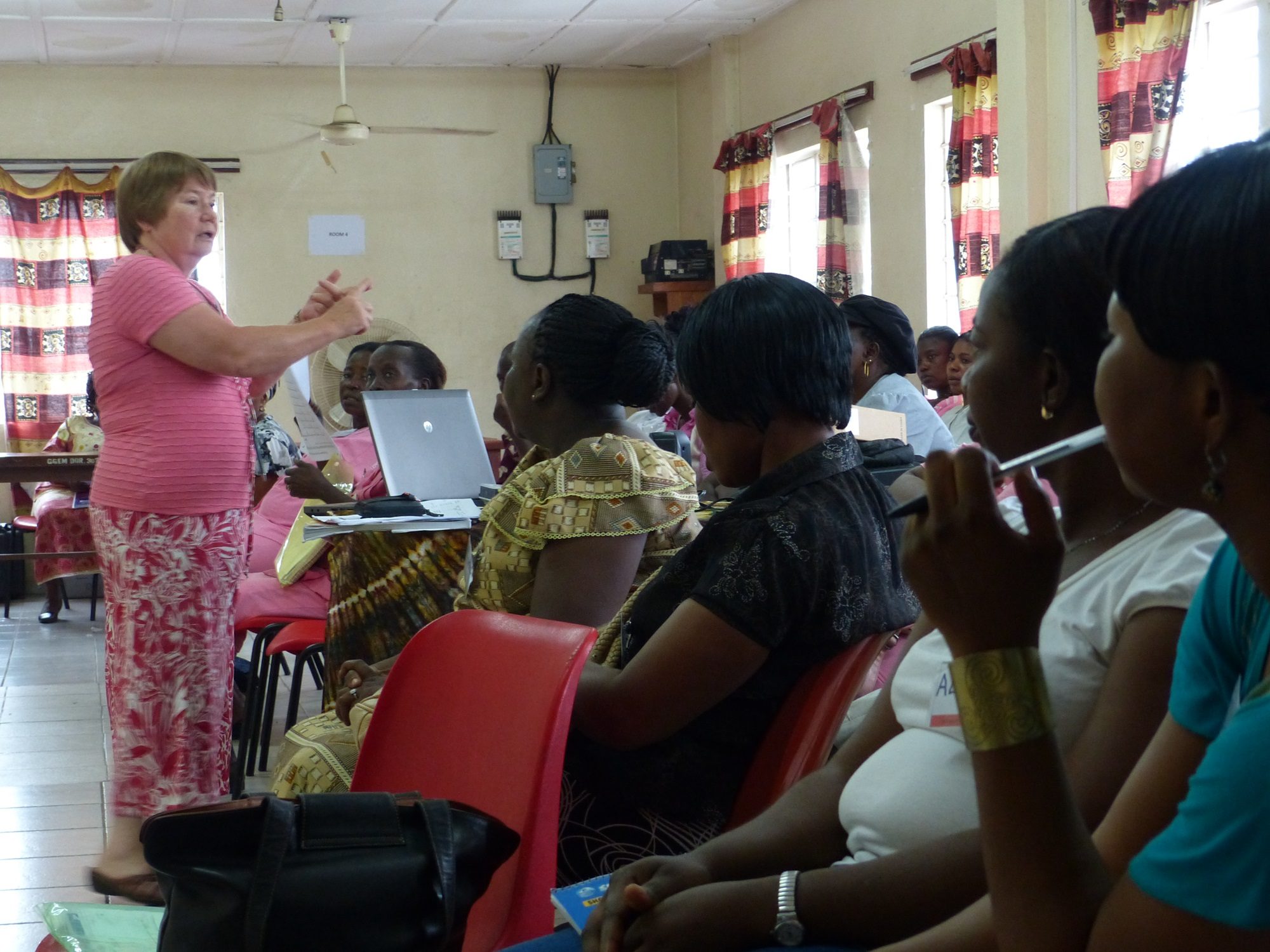
The streets of Freetown were busy, rough, rutted, and soaking wet. The HPA offices were situated in their own gated compound with night watchman to ensure security. The rooms were basic, with a fan but no air conditioning, but clean. The lack of air conditioning and high humidity unfortunately meant that absolutely everything was dam, including all the bedding. There was a single sheet covering the mattress, but nothing else in the way of blankets, so I was glad to have brought my sleeping bag liner to have something to sleep in! There were a couple of bathrooms shared by the guest rooms, but no running water; large vats of water were kept in the room along with a bucket for filling the toilet cistern, and a smaller container for taking a bucket shower with! All in all, the rooms were just fine for a few nights and it was very generous of HPA to put us up; it was nice not to be in a hotel for once, too.
After dropping off our baggage we went immediately with Betty, from the Liverpool School of Tropical Medicine, to a training session that they were conducting. The LSTM were a group that Sophia had often worked with, whose office was hosted by HPA, who provided training courses run by volunteer doctors for local medical staff. The session we attended was for midwives, and was being run by Alison from LSTM. We hung around while the session ended, before joining Alison for dinner at her guest house; she told us all about the work that LSTM were doing, and discussed her experiences with the organisation. Sophia had a lot to add as well, having been involved from the very beginning and seen the organisation grow to its current, multi-country role.
Click here to read the next part of the story.

